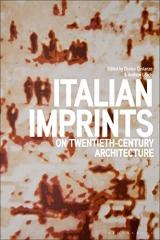Italian architecture has long exerted a special influence on the evolution
of architectural ideas elsewhere - from the Beaux-Arts academy's
veneration of Rome, to modernist and postmodern interest in Renaissance
proportion, Baroque space, and Mannerist ambiguity. This book critically
examines this enduring phenomenon, exploring the privileged position of
Italian architects, architecture, and cities in the architectural culture of
the past century.
Questioning the deep-rooted myth of Italy within architectural history, the
book presents case studies of Italy's powerful yet problematic position in
20th-century architectural ideologies, at a time when established
Eurocentric narratives are rightly being challenged. It reconciles the
privileged position of Italian architecture and design with the imperative
to write history across a more global, diverse, heterogenous cultural
geography. Twenty chapters from distinguished international scholars
cover subjects and architects ranging from Alberti to Gio Ponti, Aldo
Rossi, Manfredo Tafuri, Vittorio Gregotti; cities from Rome and Venice to
Milan; and an array of international architects, movements, and
architectural ideas influenced by Italy. The chapters each question where,
how, and why the disciplinary edifice of 20th-century architecture-its
canon of built, visual, textual, and conceptual works-relied on Italian
foundations, examining where and how those foundations have become
insecure.

(0 Comentarios)